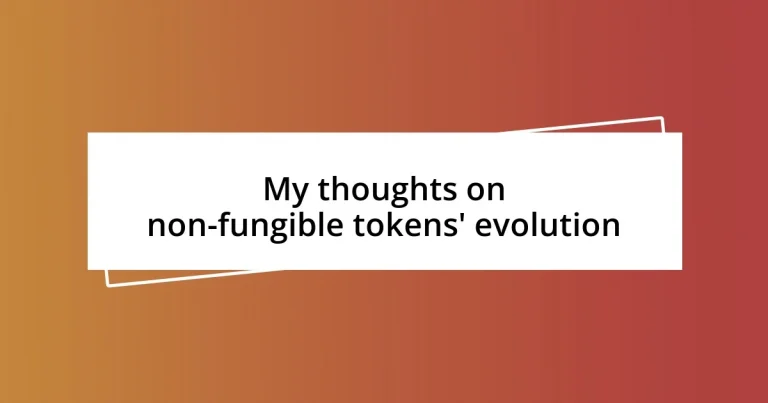Key takeaways:
- The history of NFTs began with “colored coins” in 2012 and gained traction with the launch of CryptoKitties in 2017, marking a significant shift in digital ownership perception.
- Beeple’s digital artwork sold for $69 million in March 2021, illustrating the democratization of art and the direct connection between artists and collectors.
- Challenges to NFT adoption include a steep learning curve, environmental concerns, and trust issues in the market, which need addressing for wider acceptance.
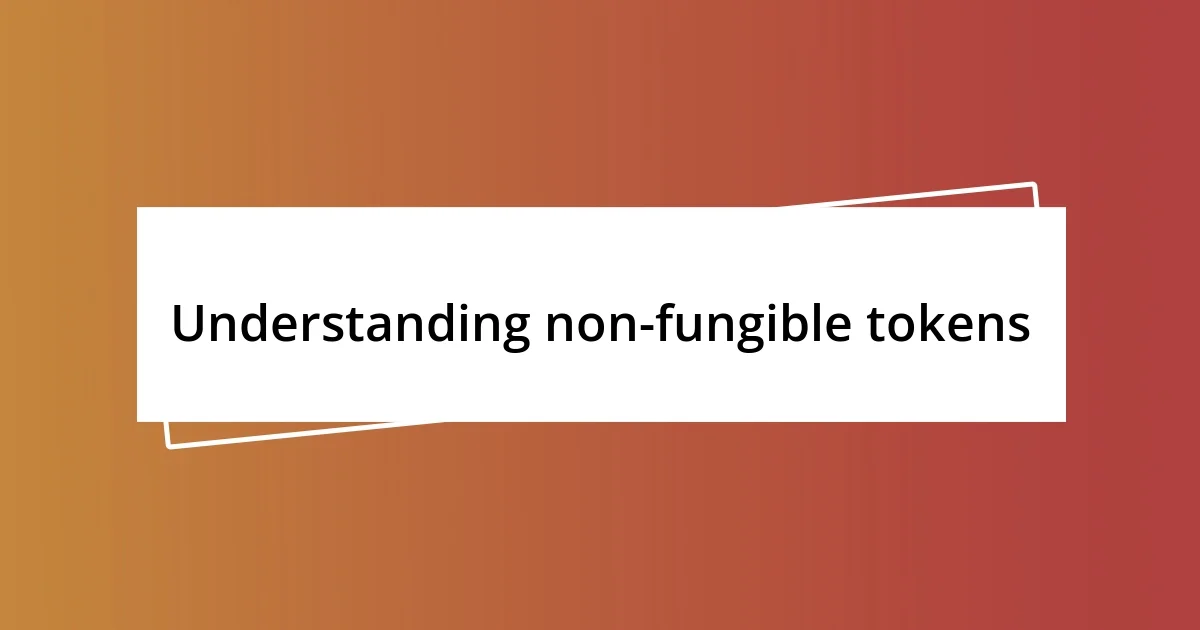
Understanding non-fungible tokens
Non-fungible tokens (NFTs) are a fascinating digital innovation that represent ownership of unique items or assets, often in the realm of art, music, and gaming. Unlike cryptocurrencies such as Bitcoin, which are interchangeable, each NFT carries distinct information that makes it one-of-a-kind. This unique aspect makes me wonder—how does this changing definition of ownership fundamentally alter the value we place on art and culture?
When I first encountered NFTs, I was skeptical about their significance, even questioning why anyone would pay exorbitant amounts for a digital image. However, as I began to explore different platforms and see actual examples, like a digital artwork selling for millions, it clicked for me. It’s not just about owning a digital file; it’s about being part of a community and the story behind that piece.
I’ve spoken to artists who have seen their careers transformed through NFTs, gaining exposure and direct sales without traditional gatekeepers. Their excitement is palpable—many of them feel liberated, as NFTs provide a new way to monetize creativity. Isn’t it exhilarating to consider that someone could make a living from a digital creation that, in the past, may have gone unnoticed? This personal connection to the human experience of creation really underscores what NFTs are all about: the blend of technology, art, and individuality.
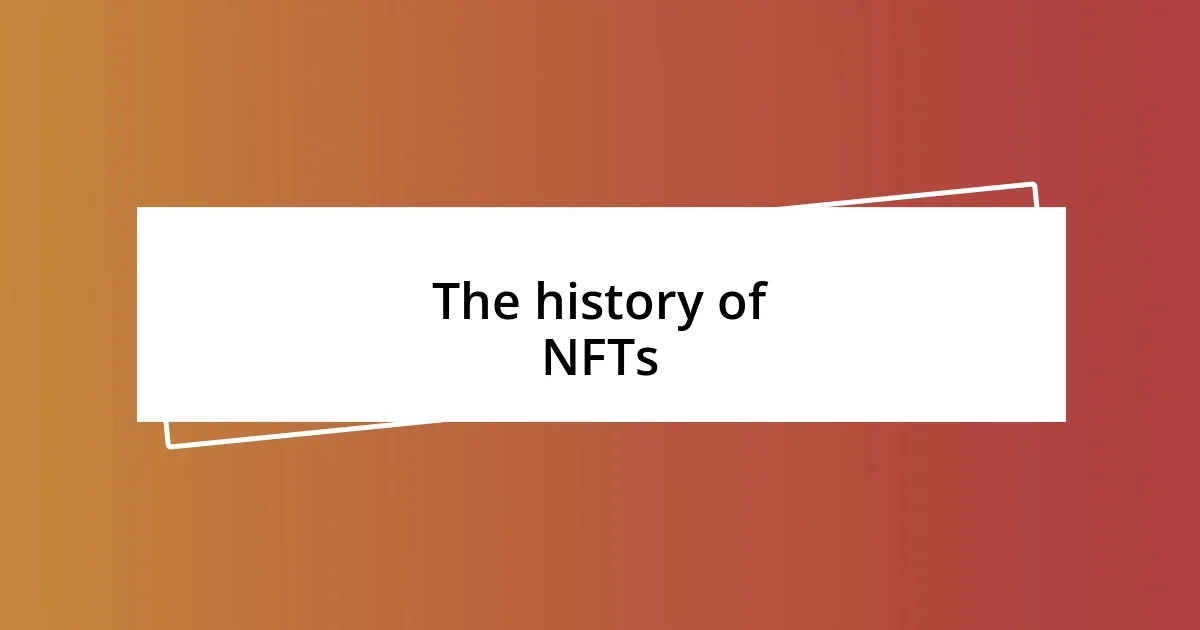
The history of NFTs
It’s intriguing to consider how NFTs have evolved over the years, beginning from their roots in the early 2010s. Initially, the concept of tokenizing unique digital items started gaining traction as developers experimented with blockchain technology. I recall stumbling upon “CryptoPunks,” one of the earliest examples of NFTs, in 2017, and just like most people, I didn’t understand the fuss then. However, it became clear that they were painting a new picture of digital ownership.
Key milestones in the history of NFTs include:
- 2012: The term “colored coins” emerges, laying the groundwork for NFTs on the Bitcoin blockchain.
- 2017: The launch of CryptoKitties captures public attention, showcasing digital collectibles on the Ethereum blockchain.
- 2020: Artists and brands flock to NFTs, with pieces selling for staggering prices, signaling a shift in digital ownership perception.
- March 2021: Beeple’s “Everydays: The First 5000 Days” sells for $69 million at Christie’s, marking a landmark event for digital art.
As I reflect on these developments, it’s both exciting and overwhelming to see how quickly the landscape has changed. The leap from experimental concepts to mainstream recognition feels almost surreal, don’t you think? This evolution not only highlights the adaptability of technology but also points to our growing need for unique digital expressions.
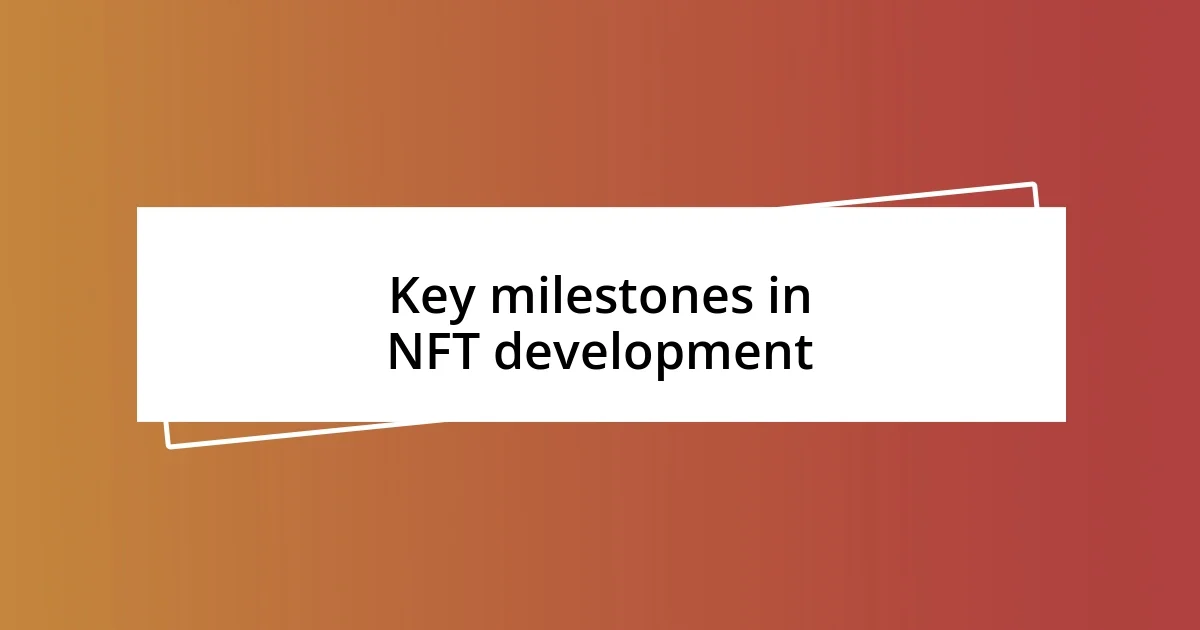
Key milestones in NFT development
The progression of NFTs has been remarkable, with various milestones marking their evolution. In 2012, the introduction of “colored coins” laid the foundation for NFTs on the Bitcoin blockchain. I remember delving into the concept back then—it felt like stepping into uncharted territory. It was more of a curiosity than a trend at that time, but little did I know this was just the beginning.
Fast forward to 2017, when CryptoKitties burst onto the scene and changed everything. I recall my friends excitedly discussing how people were buying virtual cats for absurd amounts, and it struck me as bizarre. However, as I explored this phenomenon, it dawned on me that it was not just about the cats; it was about digital ownership, community, and the thrill of collecting.
Then came the eye-opening moment in March 2021, when Beeple’s artwork sold for a staggering $69 million. That sale shifted my perspective on digital art completely—I couldn’t help but think of the traditional art world and its gatekeepers. I realized that we were witnessing a democratization of art and creativity. Artists were no longer restricted to typical gallery spaces; they could directly connect with collectors and fans, which is a thrilling shift in the art landscape.
| Year | Milestone |
|---|---|
| 2012 | Emergence of “colored coins” on the Bitcoin blockchain. |
| 2017 | Launch of CryptoKitties, showcasing collectibles on Ethereum. |
| 2020 | Surge of artists and brands entering the NFT space. |
| March 2021 | Beeple’s artwork sells for $69 million at Christie’s. |
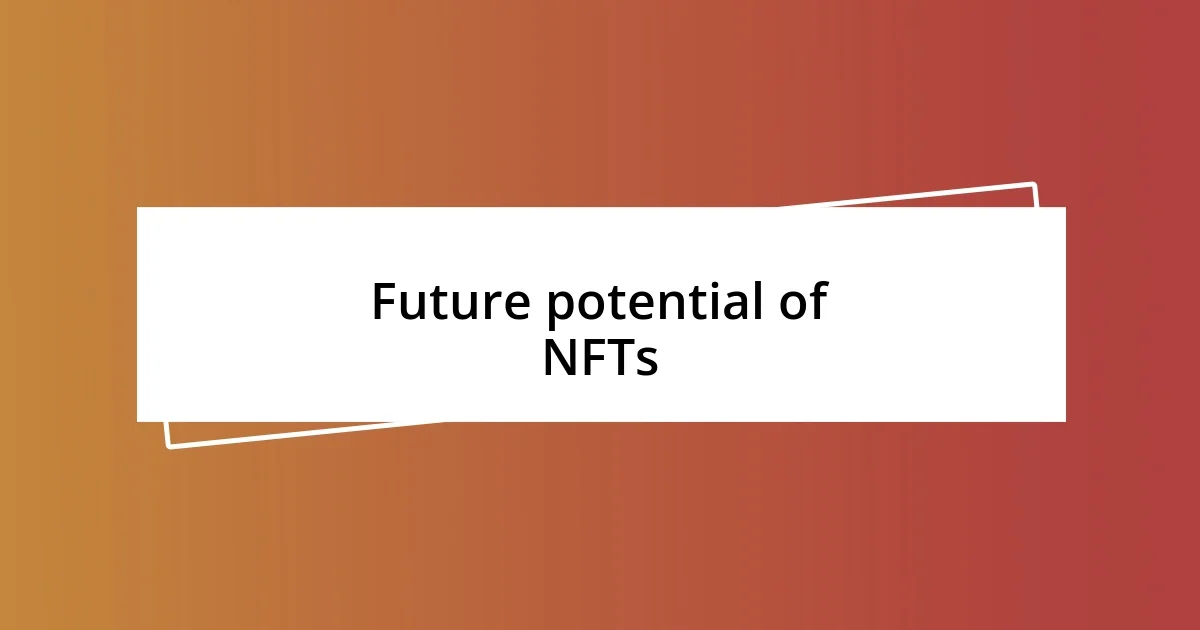
Future potential of NFTs
I truly believe the future of NFTs is rich with possibilities that we’re only beginning to explore. Imagine virtual real estate, where artists and creators can establish unique spaces in the metaverse, showcasing their work and hosting immersive experiences. When I contemplate this, I can’t help but feel excitement at the prospect of hosting my own virtual gallery one day. How cool would it be to curate an exhibit viewed by thousands, all from the comfort of my home?
Moreover, the potential for NFTs to reshape identity and ownership is staggering. Beyond art and collectibles, I envision certificates and important documents being minted as NFTs to verify authenticity without the risk of forgery. Personally, I think about how valuable that could be for things like education credentials and legal contracts. Could this technology redefine how we perceive tangible ownership in the digital age? I think it very well could.
As we look ahead, I find myself pondering the integration of NFTs within various industries. From music to gaming and beyond, the opportunities seem endless. Just imagining a world where musicians can tokenize their albums as NFTs to retain a fairer share of profits is refreshing. It’s not just about owning a digital asset; it’s about fostering a closer connection between creators and their audience. That idea truly resonates with me—how much more rewarding would it be to support artists directly while owning a piece of their journey?
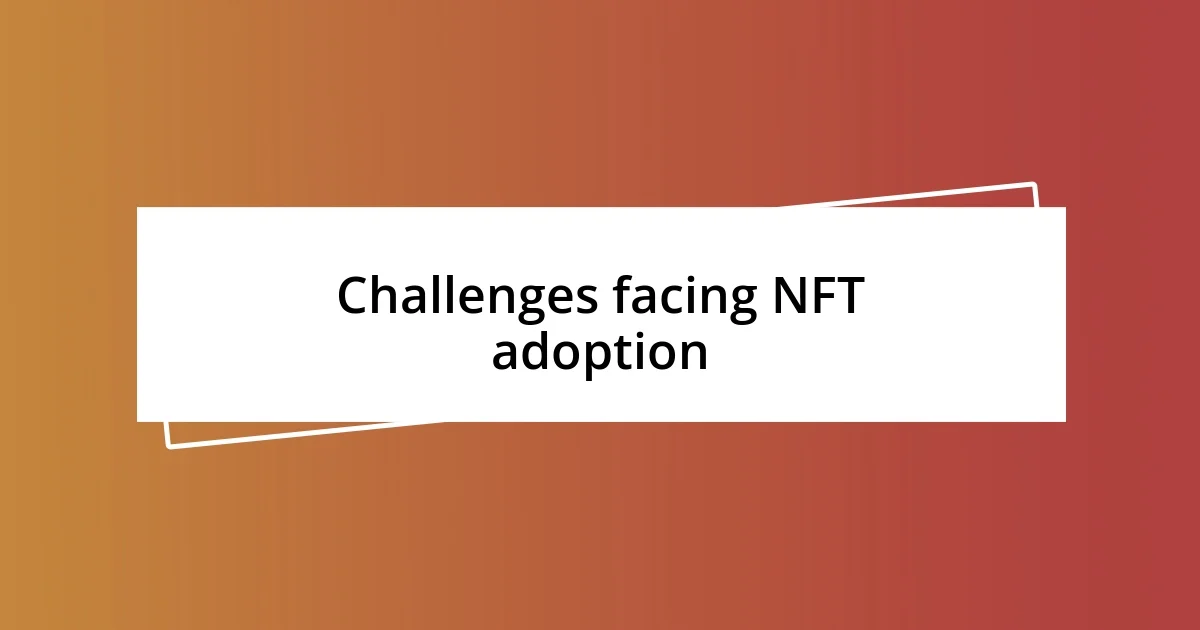
Challenges facing NFT adoption
One of the biggest challenges I encounter when discussing NFT adoption is the steep learning curve for newcomers. When I first tried to buy an NFT, I was overwhelmed by crypto wallets, gas fees, and blockchain transactions. Honestly, it felt like I was trying to decode a complex puzzle without a guide! This complexity can deter potential users, leaving many skeptical about diving into the NFT space.
Another challenge is the issue of environmental concerns surrounding blockchain technology. I remember grappling with mixed feelings when I learned how much energy some systems consume. It led me to question whether I should engage in this digital renaissance or step back due to the environmental footprint. It’s a valid concern, and addressing it will be crucial to gaining wider acceptance in the broader community.
Additionally, there’s a pervasive issue of trust in the NFT market. With reports of scams and stolen artwork popping up, I often find myself cautious, wondering how many genuine projects exist among the fake ones. How do we, as a community, build a safer environment for artists and collectors? It’s essential to foster transparency and encourage platforms to implement better security measures, so we can move forward confidently.












